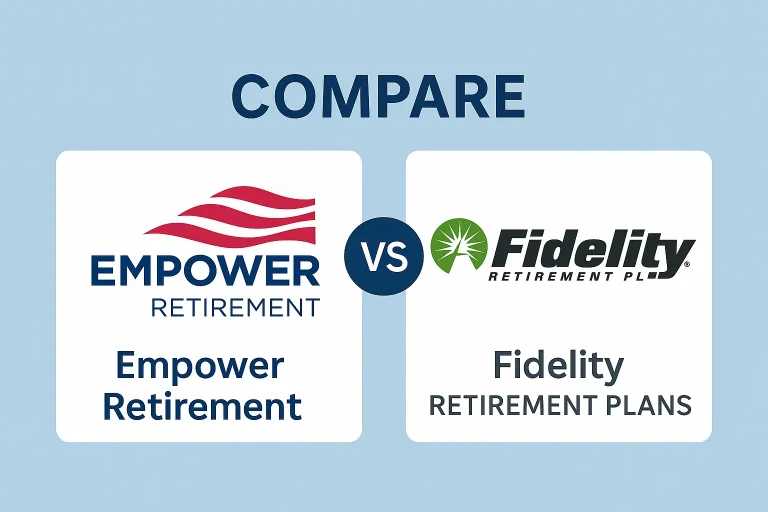What Is a Good Monthly Retirement Income for a Couple?
Retirement Income for a Couple approaching their golden years faces unique financial challenges. Recent data shows households aged 65+ spend approximately $6,080 monthly, with median incomes for retired pairs reaching $6,374 monthly. These numbers highlight the tight balance many face between fixed resources and living costs.
Effective financial preparation requires examining three core elements: current spending habits, projected healthcare needs, and desired lifestyle choices. While some expenses decrease post-career, others, like medical care, often rise significantly. Geographic location plays a crucial role, too – urban dwellers typically need larger budgets than rural residents.
Coordination becomes critical when managing dual Social Security benefits and retirement accounts. Experts suggest aiming for 70-80% of pre-retirement earnings to maintain comfort. For example, partners earning $120,000 annually might target $84,000-$96,000 yearly during retirement. This cushion helps address inflation surprises and extended lifespans.
Key Takeaways
- Median retired household spends $6,080 monthly according to federal data
- Dual-income planning requires coordinating Social Security claims and withdrawal strategies
- Healthcare costs often increase with age, demanding dedicated savings
- Location significantly impacts necessary retirement budgets
- Income replacement targets typically range from 70-80% of pre-retirement earnings
- Longevity considerations should shape withdrawal rates and estate plans
Understanding Retirement Income for Couples
Joint retirement planning demands careful coordination of resources and timelines. Unlike individual strategies, partners must align lifestyle goals with shared financial realities. One partner working longer or claiming Social Security later can reshape income streams for both.
Defining Financial Stability in Retirement
Security for partners means covering both individuals’ needs across different lifespans. A 65-year-old couple today has a 50% chance that one partner will reach 92. This longevity requires savings to last nearly three decades while accounting for inflation.
Unique Challenges for Couples
Coordinating two Social Security timelines creates complex decisions. If one partner earned significantly more, their benefit becomes the financial anchor. Delaying claims until 70 boosts payments by 32% – a critical move for primary earners.
Geographic differences magnify budgeting challenges. Urban couples often need 40% more income than their rural counterparts for equivalent lifestyles. Healthcare adds another layer: 70% of retirees will need long-term care, potentially costing $100,000+ annually per person.
Budgeting for Retirement: Estimating Expenses and Income
Building a retirement budget requires dissecting current financial habits thoroughly. Start by examining bank statements from the last 12 months to identify patterns. Housing typically consumes 35% of budgets, combining mortgage payments, property taxes, and maintenance fees.
Food ranks second in household costs, averaging $780 monthly for groceries and dining combined. Seasonal variations in heating bills or holiday gifts often surprise retirees – track irregular expenses through annual records.
Identifying Essential and Discretionary Spending
Essential costs form the foundation of any sustainable plan. These include healthcare premiums, utilities, and transportation for medical appointments. Urban couples might spend 18% more on housing than their rural counterparts.
| Category | Essential Costs | Discretionary Costs |
|---|---|---|
| Housing | Mortgage, insurance | Home renovations |
| Food | Groceries | Restaurant meals |
| Transportation | Car insurance | Road trips |
Discretionary expenses like travel or hobbies require careful planning. Many couples reallocate former work-related funds – saved commuting costs might fund a monthly weekend getaway instead. Always prioritize emergency savings before expanding leisure activities.
What Is a Good Monthly Retirement Income for a Couple
Retirement planning transforms when two people coordinate their financial futures. Let’s examine practical scenarios showing how different income streams combine to create stability.
Analyzing Examples and Averages
Consider partners receiving $1,975 each from Social Security in 2025. Their combined $3,950 monthly forms a foundation. Add $500,000 in savings using the 4% withdrawal rule, generating $1,666 monthly. This totals $5,616 per month before taxes.
Regional cost differences dramatically affect needs. Urban pairs might require $8,000+ to match the lifestyle $4,000 provides in rural towns. Healthcare hubs like Miami or Boston often demand higher budgets than Midwestern communities.
Adjusting for Inflation and Longevity
A $5,600 income today loses 40% of its value over 15 years at 3% inflation. Smart plans include annual adjustments to withdrawals or choosing inflation-protected annuities.
With 30-year retirements becoming common, sustainability trumps short-term gains. Partners aged 65 should structure portfolios to support potential 95-year lifespans. This often means keeping 40-50% in growth-oriented investments during early retirement years.
Key Income Sources: Social Security, Pensions, and Savings
Effective retirement strategies for couples depend on integrating three financial pillars. Social Security forms the bedrock, pensions add stability, and personal savings provide flexibility. Each component requires careful coordination to create lasting security.

Social Security Benefits Breakdown
Dual Social Security claims currently average $3,950 monthly for couples. Delaying claims until age 70 boosts payments by 8% annually – a $1,975 benefit becomes $2,600. Lower-earning partners can claim up to 50% of their spouse’s benefit if it exceeds their own.
Survivor benefits protect against income loss, allowing widowed spouses to retain 100% of their partner’s payment. This safety net becomes crucial given that 25% of 65-year-olds will live past 90.
Utilizing Investment Withdrawals and Pensions
The 4% withdrawal rule helps couples manage retirement accounts sustainably. A $500,000 portfolio generates $1,666 monthly while preserving principal. Combine this with pension income for a predictable cash flow.
Traditional pensions now cover only 13% of private-sector workers but remain valuable for public employees. These plans provide guaranteed payments unaffected by market swings. Pair them with Roth IRA withdrawals for tax-efficient income.
Smart couples balance immediate needs with future security. They adjust withdrawals during market highs and supplement with annuities when necessary. This layered approach helps maintain lifestyle standards through changing economic conditions.
Balancing Expenses: Housing, Healthcare, and Lifestyle Costs
Managing essential costs forms the cornerstone of retirement stability for partners. Housing dominates budgets, while healthcare demands strategic preparation. Smart couples address these areas early to avoid financial strain later.
Estimating Housing and Utility Costs
Home-related spending consumes 36% of retired couples’ budgets – about $1,787 monthly. This includes property taxes, insurance, and maintenance. Urban residents often face higher costs, making relocation a potential savings strategy.
Downsizing can free $100,000+ in home equity while slashing utility bills. Many retirees save $300/month moving from 2,000 to 1,200 square feet. Consider energy-efficient upgrades to reduce ongoing expenses.
Planning for Healthcare and Long-Term Care
Medical needs escalate with age, requiring $330,000+ in dedicated savings. Annual premiums for Medicare Parts B and D average $3,900 per person. Dental and vision care add $1,200 yearly – often overlooked in budgets.
Three critical steps protect against long-term care costs:
- Explore hybrid life insurance policies with care riders
- Compare assisted living costs across regions
- Maximize HSA contributions during working years
Geographic arbitrage offers significant relief. Retiring in Tennessee instead of California could save $18,000 annually on housing and healthcare. Always factor local tax policies into relocation decisions.
Strategies to Maximize Retirement Savings and Income
Smart financial strategies can transform retirement dreams into achievable realities for partners. Three approaches often make the difference between scraping by and thriving: disciplined withdrawal rates, optimized benefit timing, and proactive debt management.
Implementing the 4% Rule
The 4% withdrawal guideline helps partners calculate needed savings. If you spend $60,000 annually, aim for $1.5 million saved (25x expenses). This strategy allows $60,000 withdrawals in year one, adjusted for inflation afterward.
| Annual Expenses | Required Savings | Year 1 Withdrawal |
|---|---|---|
| $50,000 | $1.25 million | $50,000 |
| $75,000 | $1.875 million | $75,000 |
| $100,000 | $2.5 million | $100,000 |
Timing Social Security and Reducing Debts
Delaying Social Security until 70 boosts payments by 32% compared to claiming at 66. For a $2,000 monthly benefit, waiting adds $640/month – $7,680 extra yearly.
Eliminating debts before retiring creates breathing room. Consider these steps:
- Pay off high-interest credit cards first
- Make extra mortgage payments
- Refinance student loans
Tax-smart accounts help manage withdrawals. Use traditional IRAs for lower tax brackets and Roth accounts for tax-free growth. Always max out employer 401(k) matches – it’s free money toward your financial security.
Planning for Change: Variable Retirement Expenses Over Time
Financial plans require ongoing adjustments as priorities shift through different life stages. Many partners discover that their initial budget evolves significantly within the first decade of leaving the workforce.
Adapting to New Financial Realities
Early retirement years often bring higher spending on travel and hobbies. Data shows active couples aged 55-64 typically use 22% more funds than those in their 70s. This pattern reverses as mobility decreases and healthcare demands grow.
Medical costs can disrupt even well-prepared budgets. A single chronic condition may need $1,500+ monthly for treatments and home care. Nursing facilities now average $9,200 per month – a figure that doubles every 15 years.
Life-altering events demand swift financial responses. Losing a spouse reduces Social Security benefits while increasing household costs. Market downturns during withdrawal phases might require temporary spending cuts.
Smart partners build flexibility into their plans. They review budgets annually and maintain emergency funds covering 12-18 months of expenses. Consider inflation-protected investments and long-term care insurance to safeguard against unpredictable costs over time.
Retirement Income for a Couple FAQ
How do Social Security benefits factor into retirement income for couples?
Social Security benefits typically replace 40% of pre-retirement earnings. Couples can maximize payouts by delaying claims until age 70. Spousal benefits allow partners to claim up to 50% of the higher earner’s benefit.
What factors determine financial stability for retired couples?
Key factors include combined savings, healthcare costs, housing status (mortgage-free vs. renting), inflation rates, and longevity. A diversified income strategy with pensions, investments, and annuities strengthens stability.
How does the 4% rule help manage retirement savings?
The 4% rule suggests withdrawing 4% annually from savings to balance income needs with portfolio longevity. For example,
FAQ
How do Social Security benefits factor into retirement income for couples?
Social Security benefits typically replace 40% of pre-retirement earnings. Couples can maximize payouts by delaying claims until age 70. Spousal benefits allow partners to claim up to 50% of the higher earner’s benefit.
What factors determine financial stability for retired couples?
Key factors include combined savings, healthcare costs, housing status (mortgage-free vs. renting), inflation rates, and longevity. A diversified income strategy with pensions, investments, and annuities strengthens stability.
How does the 4% rule help manage retirement savings?
The 4% rule suggests withdrawing 4% annually from savings to balance income needs with portfolio longevity. For example, $1 million saved allows $40,000 yearly withdrawals, adjusted for inflation.
Why should couples prioritize paying off debts before retiring?
Eliminating mortgages, car loans, or credit card debt reduces fixed expenses. This lowers the required monthly income and preserves savings for discretionary spending or emergencies.
What healthcare costs should couples plan for in retirement?
Medicare premiums, supplemental insurance, prescriptions, and long-term care (average $4,500/month for a private nursing home room) are critical. Health Savings Accounts (HSAs) can offset these expenses tax-free.
How can couples adjust retirement budgets for inflation?
Allocate 2-3% annually for inflation adjustments. Treasury Inflation-Protected Securities (TIPS) or diversified stock investments help protect purchasing power over 20-30 years.
What role do pensions play in a couple’s retirement plan?
Pensions provide predictable income, reducing reliance on volatile markets. Couples should confirm survivor benefit options and integrate payments with Social Security for tax efficiency.
When should couples consult a financial advisor about retirement planning?
Consult a Certified Financial Planner (CFP) 5-10 years before retiring to optimize Social Security timing, tax strategies, and withdrawal rates. Regular reviews ensure plans adapt to market changes or health shifts.
million saved allows ,000 yearly withdrawals, adjusted for inflation.
Why should couples prioritize paying off debts before retiring?
Eliminating mortgages, car loans, or credit card debt reduces fixed expenses. This lowers the required monthly income and preserves savings for discretionary spending or emergencies.
What healthcare costs should couples plan for in retirement?
Medicare premiums, supplemental insurance, prescriptions, and long-term care (average ,500/month for a private nursing home room) are critical. Health Savings Accounts (HSAs) can offset these expenses tax-free.
How can couples adjust retirement budgets for inflation?
Allocate 2-3% annually for inflation adjustments. Treasury Inflation-Protected Securities (TIPS) or diversified stock investments help protect purchasing power over 20-30 years.
What role do pensions play in a couple’s retirement plan?
Pensions provide predictable income, reducing reliance on volatile markets. Couples should confirm survivor benefit options and integrate payments with Social Security for tax efficiency.
When should couples consult a financial advisor about retirement planning?
Consult a Certified Financial Planner (CFP) 5-10 years before retiring to optimize Social Security timing, tax strategies, and withdrawal rates. Regular reviews ensure plans adapt to market changes or health shifts.







